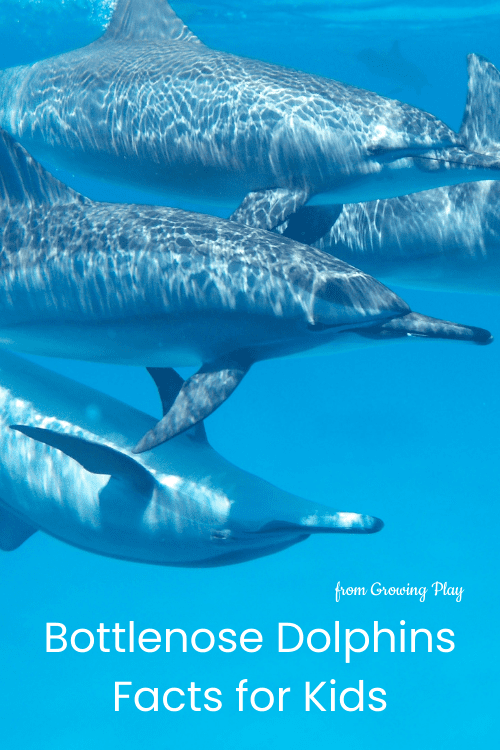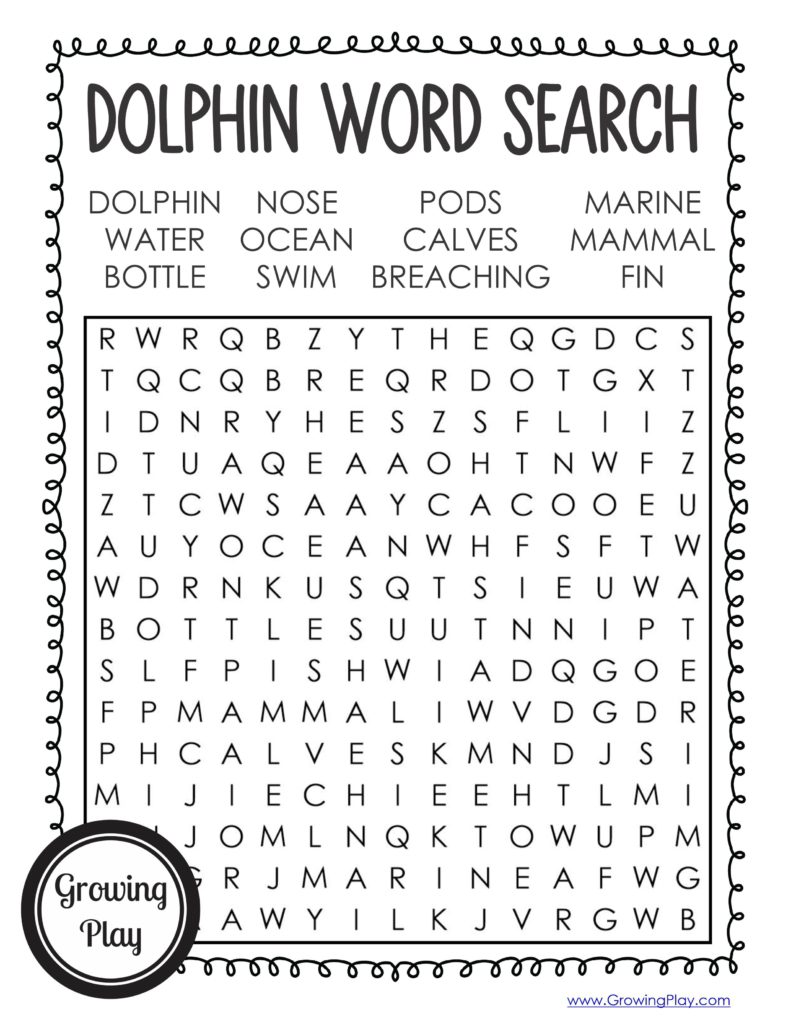Bottlenose Dolphins Facts for Kids

Have you ever been to the ocean and watched the waves in the distance? If you were looking closely enough, you may have seen bottlenose dolphins! Although you may have mistaken them for sharks. Dolphins are sometimes considered false killer whales because it can be difficult to tell the difference between the two animals. However, after reading these bottlenose dolphins facts for kids, you’ll never mix up the two animals again.
Dolphins are one of the cutest salt water ocean animals in my opinion and I will always wake up early to see the dolphins swimming around. They can be found popping up in the distance or even in shallow water closer to the shore. Whether or not you have seen dolphins before, you can’t deny that they are incredible creatures. Who wouldn’t want to learn more about them? Well, lucky for you, we’ve compiled a list of some of the most interesting bottlenose dolphins facts for kids about the most common dolphin species.
You can download two free dolphin printables at the bottom of the post – a coloring page and a dolphin word search.
What are Bottlenose Dolphins?
The common bottlenose dolphin can be found in oceans and seas around the world. They are the most popular species of dolphins in the Atlantic Ocean and have actually earned the nickname of Atlantic bottlenose dolphins.
Bottlenose dolphins are marine mammals. They also happen to be a very intelligent marine mammal known for their quick learning ability, self-awareness, and problem-solving skills.
Bottlenose dolphins are known as the friendliest and smartest creatures of the sea. They are also one of the few mammal species that live in water. As mammals, they are warm-blooded, have hair (only when they are born), nurse their young with milk, and breathe air using lungs.
The bottlenose dolphins must make frequent trips to the surface to catch a breath through their blowhole (nostril). Their body temperature is slightly higher than the surrounding water which means they must use more energy to maintain their internal warmth. They also have a very well-developed sense of hearing and can communicate with each other using a variety of sounds.

Where Can you Find Bottlenose Dolphins?
Bottlenose dolphins enjoy tropical oceans and temperate waters, such as the Mediterranean Sea and the Atlantic Ocean. While the Atlantic Ocean typically has a cold water temperature, the bottlenose dolphin keeps warm by swimming around for a long time. They also have a layer of blubber, or fat, to help them stay warm.
What do Bottlenose Dolphins Look Like?
Bottlenose dolphins are typically between 6 and 13 feet long and weigh 650 pounds on average. The larger bottlenose dolphins can have a body weight over 1,000 pounds! Wow, that’s one huge dolphin!
The bottlenose dolphin has several fins to help them swim. These include pectoral fins, located on the sides of the animal and a dorsal fin on top of the dolphin. This is typically what you will see poking out of the water when looking at dolphins.
Bottlenose dolphins have a long, beak-like snout, which they use to catch fish, squid, and other prey items. Bottlenose dolphins eat meat and are carnivorous animals. Can you name any other carnivorous animals?
Bottlenose Dolphins Facts for Kids – Groups and Travel
Bottlenose dolphins are some of the smartest animals! They are very social animals and can actually communicate with each other using a variety of vocalizations and sound waves. They also use echolocation to navigate and hunt in the dark depths of the ocean.
Groups of bottlenose dolphins are known as pods. Small pods can contain just a few animals while large groups can contain upwards of 1,000 dolphins! Could you imagine seeing this many dolphins at once?
Bottlenose dolphins are fast swimmers and can reach speeds of up to 25 miles per hour. Wow, those are some speedy swimmers!
The speed, distance, and direction a bottlenose dolphin is travelling can often be determined by the clicking sounds they make with their lower jaw and fat from the side of their jaws.
Baby Bottlenose Dolphins
Female dolphins give birth to one or two babies at a time. Dolphin babies are called calves.
Calves nurse for up to two years and remain with their mothers for several years afterwards. Mothers and their young make up small groups or pods of dolphins.
Why Bottlenose Dolphins are Important
Bottlenose dolphins are considered to be a “keystone species”. This means that they play a important role in the health of their ecosystem. For example, they help keep populations of fish and other prey items in check.

More Interesting Bottlenose Dolphins Facts for Kids
If you’re lucky, you can see bottlenose dolphins leaping out of the water while they are swimming. This behavior is known as breaching and dolphins use it to assert their dominance. Breaching is more typically performed by adult males although adult females will breach too, especially during mating season.
Believe it or not, bottlenose dolphins are popular pets and have been featured in many TV shows and movies, including Flipper and Free Willy, which describes the tale of a famous dolphin. Many species of bottlenose dolphins are easy to train to perform tricks and other cool stunts. You can see bottlenose dolphins perform at SeaWorld and other amusement parks or even a dolphin research center.
Bottlenose dolphins have few natural predators, but may be preyed upon by killer whales and sharks, such as the Great White Shark. Humans can also be predators to bottlenose dolphins either knowingly or unknowingly. Bottlenose dolphins are sometimes hunted specifically for their meat and blubber, although sometimes they just end up caught in fishing nets and lines.
Bottlenose Dolphins Facts for Kids – Protection
Bottlenose dolphins are listed as “least concern” on the IUCN Red List of Threatened Species. However, they can still face threats from habitat destruction and degradation, pollution, and climate change. That’s why it’s important to take care of the environment because not only are we helping ourselves, but we are helping the bottlenose dolphins too!
As you just learned about, bottlenose dolphins are extremely important to the food chain in oceanic environments. They are carnivores, meaning they eat meat such as fish and squid. This helps regulate the population of these species and keeps the bottlenose dolphins full so they can exercise all day long. If you want to keep seeing bottlenose dolphins swimming in the water, make sure you keep taking care of the water around you. The dolphins may just thank you with a wave!
DOWNLOAD YOUR FREE BOTTLENOSE DOLPHINS PDF PACKET

WANT MORE FUN FACTS FOR KIDS?
Check out these fun facts for kids here and browse all the other topics at the bottom of the post.


